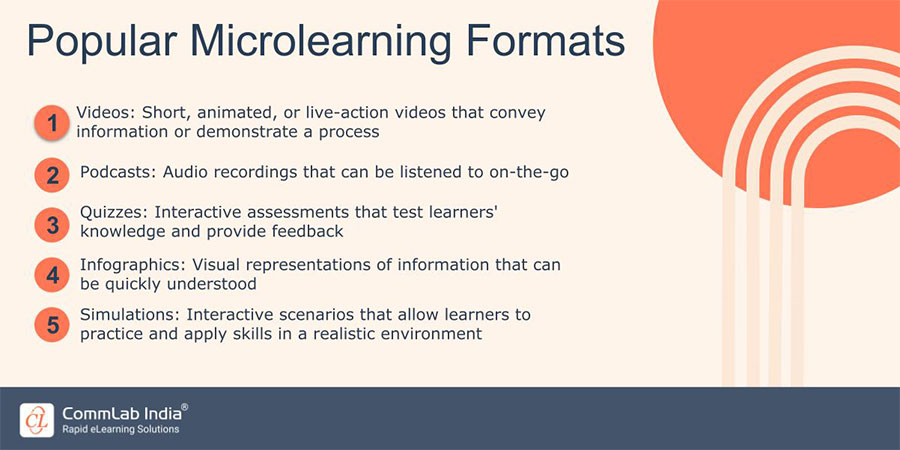Everything You Need to Know About Driving ROI for eLearning Solutions
Learn how to maximize the return on your eLearning solution investments. This blog covers key strategies and questions to ask for driving eLearning ROI.

ELearning has become a powerful tool for organizations seeking to train employees, onboard new hires, educate customers, and achieve broader business goals. However, like any investment, it's vital to ensure that your eLearning solutions are delivering a positive return on investment (ROI). In this blog, we'll dive into the key questions to guide your approach to driving ROI.
Do You Want to Know About Driving ROI for eLearning Solutions?
Here are a few common questions this blog will answer -
- What are your business goals and how eLearning can support them?
- How can we create engaging eLearning experiences?
- How is eLearning impacting your key business metrics?
- How can we optimize our eLearning program for even greater ROI?
Read on to know the answers to these and a few more questions.
Understanding eLearning ROI
eLearning ROI is the measure of the value your organization gains from its eLearning investments compared to the costs involved. It considers not just financial savings, but also improvements in performance, productivity, and business outcomes.
→ Download eBook Now: Online Learning Services
Why is measuring eLearning ROI important?
Measuring ROI helps you to -
- Justify the investment in eLearning: In any organization, budgets are scrutinized. eLearning initiatives can sometimes seem like an additional expense. Hard data showing a positive ROI helps you clearly demonstrate that the cost of developing and implementing your eLearning programs brings worthwhile returns to the company. By showing that the benefits outweigh the costs, you make a stronger case for continued support and potential expansion of your eLearning offerings.
- Identify areas for improvement within your programs: ROI measurement isn't just about proving success to others; it's about improving your own processes. Which courses show the highest ROI, and which might be underperforming? Detailed analysis can help you identify strong content to replicate, as well as pinpointing modules that might need revision, greater interactivity, or updates to maintain relevance.
- Demonstrate the value of eLearning to stakeholders: Stakeholders including executives, department heads, and even learners themselves might need to see concrete evidence of eLearning's effectiveness. Showing metrics like improved completion rates, better post-training test performance, or positive links to increased sales numbers helps build confidence in eLearning as a valuable training method. This support fosters broader adoption and participation.
Answering Key Questions to Drive Your eLearning ROI
Before Implementation
What are your Business Goals and How can eLearning Support them?
Getting crystal clear about your business objectives is essential before investing in eLearning solutions. Are you aiming to increase sales, improve compliance adherence, streamline onboarding, reduce customer support calls, or achieve a different strategic goal? If your goal is to boost sales, eLearning programs might focus on in-depth product knowledge, effective sales techniques, and handling customer objections. When it comes to boosting sales, here’s how you can motivate your sales force.

What are the Current Costs and Inefficiencies of Traditional Training Methods?
Quantifying the pain points of existing methods helps justify the investment in eLearning. Consider costs like instructor fees, travel expenses, venue rental, lost productivity for in-person sessions, and the expense of printing materials. If instructor-led workshops require employees from multiple locations to travel, the expenses and time out of the office add up quickly. eLearning could offer a more cost-effective and time-efficient solution.
What are the Target Behaviors and Performance Improvements you Want to Achieve?
Avoid the trap of creating eLearning just for the sake of having it. What specific actions do you want learners to take differently after the training? What measurable improvements in job performance are you targeting? Training on a new software system should not only teach navigation but aim for faster task completion times and reduce errors by a certain percentage after implementation.
During Development
How can we Create Engaging and Effective eLearning Experiences?
Knowledge retention and application are higher when eLearning is well-designed. Prioritize learner-centric approaches with storytelling, scenarios, interactive elements, and opportunities for practice and feedback. Avoid passive, text-heavy content dumps. Instead of a lengthy module on safety procedures, consider a scenario-based format where learners make choices and experience the consequences of their actions in a simulated environment. Also, its more productive to design microlearning modules rather than full fledged eLearning modules that are lengthy. Here are a few microlearning formats you can choose from.

How do we Measure Learner Progress and Knowledge Acquisition?
Measuring isn't just about course completion. Incorporate tools for tracking comprehension and skill development throughout. Use quizzes, knowledge checks, simulations, and graded assessments where appropriate. Implementing a short assessment after each key concept helps identify areas where learners might need additional support or content reinforcement. Here’s a short video to help you learn about various assessment formats for effective eLearning.
Is our eLearning Solution Accessible and User-Friendly for all Learners?
Inclusivity is vital. Design your eLearning to accommodate diverse learning styles, technical abilities, and potential disabilities. Address accessibility requirements, provide clear navigation, and offer support resources for those unfamiliar with online learning formats. Include closed captioning and transcripts for videos, provide options for color schemes for those with colorblindness, and design with easy navigation for learners who may have limited computer experience.
After Implementation
Are Learners Applying the New Knowledge and Skills on the Job?
The ultimate test of eLearning effectiveness is its transfer to real-world performance. Gather 360-degree feedback from learners, and their managers, and observe on-the-job performance after training completion. Conduct surveys or interviews a few weeks after training to gauge whether learners are confidently putting new skills into practice, or if they still face challenges.
How is eLearning Impacting your Key Business Metrics?
Tie your eLearning outcomes back to the overarching business goals defined earlier. Analyze data for changes in sales figures, efficiency metrics, customer satisfaction scores, safety incident rates, or other metrics relevant to your training program. If eLearning focuses on improved customer service, track metrics like average call resolution time, customer satisfaction ratings, or a reduction in complaints to assess ROI.
How can we Optimize our eLearning Program for Even Greater ROI?
ROI is an ongoing process. Continuous analysis of data, learner feedback, and evolving business needs helps you refine your eLearning strategy. Identify areas for content updates, improved processes, or a need to target new training areas for maximum impact. Regularly reviewing course analytics can reveal learner drop-off points within modules, suggesting a need to improve engagement or streamline those sections.
Wrapping Up!
Driving eLearning ROI is an ongoing process. Measuring and maximizing your eLearning ROI might seem complex, but it's a crucial investment in your organization's success. By continually asking these questions, analyzing data, and refining your approach, you'll transform eLearning into a powerful engine for success within your organization. As online learning is the go-to approach today, here’s a free eBook to help you learn more about online learning services. Check it out now!





